
Developer: Yarrow Games
Publisher: Versus Evil, tinyBuild
Platform: Switch, PC, PS4, PS5, Xbox One, Xbox Series X|S
Tested on: PC
Tamarak Trail – Review
We’re quite fond of rogue-like deck builders like Arcana of Paradise or Verses of Enchantment, but even we have to admit that the genre is becoming oversaturated with titles of varying quality. As such, a rogue-like deck builder needs a unique hook to really draw our attention. The subject of today’s review, Tamarak Trail, has such a hook: rather than relying on cards, you’re rolling six-sided dice. It’s a simple but brilliant idea, and it’s presented in the form of an arduous trek across the Canadian wilderness. Strap on those boots, as we’re going for a walk on the Tamarak Trail!
Story
The real-life Tamarack Trail (spelled with -ck) is a well-known hiking route in Canada, offering a multi-day trek through the wilderness, where deer, bears, and wolves roam. Its fictional counterpart is initially a very similar place, but that all changes when a radioactive meteor hits the woodlands. The radiation from the space rock mutates the inhabitants of the woods and reanimates the corpses from a nearby graveyard. It’s now up to our three heroes -the Detective, the Magician, and the Tracker- to deal with all of this extraterrestrial mayhem. Tamarak Trail isn’t a narrative-driven game, but it’s good to see that at least some effort was put into an opening cutscene that provides context.
Graphics
With its visual novel art style, Tamarak Trail knocks it out of the park aesthetically. Enemy designs can be genuinely unsettling. A particularly nice touch is that everything gradually grows to become more twisted and visceral around you as you progress on the trail. That said, animation does feel on the limited side. It’s not quite the paper doll-like animation that we’ve seen in games like Fallen Legion: Revenants, but it’s not exactly very fluid either.
Sound
From an audio perspective, Tamarak Trail succeeds in creating a creepy atmosphere fit for a walk in the supernatural woods. Apart from setting the mood, the audioscape isn’t anything to write home about, with no voice acting and an OST that isn’t particularly memorable. Then again, this isn’t an absolute necessity for what the game sets out to be.
Gameplay
The core concept behind Tamarak Trail is deceptively simple: take a roguelike deck-building game and replace cards with customizable dice. Initially armed with a pair of basic dice, players set out to conquer the titular trail, traveling from node to node. Most of these nodes lead to a combat encounter against mutated animals, ghostly beings, or even bosses. Successfully defeating opponents yields die faces with which you can customize your dice. The key to victory lies in setting up dice in such a way that rolling them unleashes massive combos, but this is of course easier said than done. With three different characters to choose from, each with a different dice pool, there are plenty of strategies to try out, but since Tamarak Trail isn’t afraid to ramp up the difficulty, this game certainly isn’t a walk in the park.
Although the meat of the gameplay is in dice-based combat, we’d argue that the most important mechanical aspect is building those dice. Initially, you only have two of these, although you’ll gradually unlock more of them and adjust your strategy accordingly. It’s a good idea, for example, to build one of your dice to only have defensive faces, so that you are guaranteed to at least dismiss some damage. You’re technically able to create a die that has the same face on every side, guaranteeing a certain outcome, but the real fun begins when you create combo dice. Certain die faces allow you to flip a die after resolving its effect, and the new “flipped” face is subsequently resolved as well. You can build a die that technically keeps flipping over, resulting in a so-called infinite combo. Not only is this a viable strategy, but the game actually encourages these kinds of builds. In order to balance things, die faces become exhausted after triggering such a combo, and you’ll need to spend Resolve to restore them.
Speaking of Resolve, this is an expendable resource that slowly regenerates over time. You can make it regenerate slightly faster by skipping a turn and not rolling any dice, although this leaves you open to attack. Fortunately, the game indicates what enemies are planning to do next, so if an enemy decides to defend himself, it’s a good idea to focus on Resolve instead. Resolve isn’t just used to recover exhausted dice either. You can buff your dice by rolling them into one another, but the buffed effects require Resolve as well. As such, it’s often a good idea not to bump dice into one another, to conserve Resolve, and only really use these buffs when needed. You can opt to have the game auto-roll your dice for you, instead of rolling each one manually, but since this usually results in dice being rolled against one another, it’s typically preferable to do the rolling yourself.
Early on, the steep difficulty curve is amplified by Tamarak Trail’s stubborn refusal to actually explain certain mechanics. The game only covers the very basics, and leaves you to your own devices to figure out how combos work and what special effects actually do. It’s all good and well when a die face tells you that rolling it applies a specific debuff, but if you don’t know what said debuff does, it’s not very helpful. It would have been a tremendous help if there was a glossary or the option to hover your mouse over an effect to get an explanation of what it exactly does. Over time, you’ll grow accustomed to these through trial and error, but it does make Tamarak Trail’s early game something you’ll have to push through before things become enjoyable. The game doesn’t really open up until you’re able to upgrade the Lodge, which is Tamarak Trail’s hub area. Here you can unlock the second and third characters as well as permanent benefits that make subsequent trail runs easier.
During our time with the game, we ran into a handful of minor issues, like typos, as well as one major glitch. For one reason or another, one of our dice completely flipped, with two of the die faces floating next to it. This made the little cube pretty much unusable. We tried resolving this by trying to customize it again, but this didn’t fix it, and we had to end our run prematurely because of it. There was also an instance where the game froze up on an event node. We’re going to assume that these will be patched out in the future. As a whole, these issues didn’t quite deter us from enjoying our hike on the Tamarak Trail, and we’ll be sure to return because it feels like we’ve barely scratched the surface of what’s to find here. With a high replay value and a $14.99 price tag, you’re getting plenty of bang for your buck here.
Conclusion
With its lack of in-game explanation and steep difficulty curve, Tamarak Trail is a game that requires you to stick with it for a while before it gradually opens up and shows how good it can be. Once it clicks and you actually understand what your dice can do, it becomes a fun and unique take on the deck-building genre. At the time of writing, the game isn’t without its technical issues, however. Let’s hope that the kinks are ironed out over the coming months so that Tamarak Trail can truly cement itself as the roguelike dice-building game it has set out to be. If these are indeed resolved by the time you read this, know that we’d bump up Tamarak Trail‘s overall score by half a point.

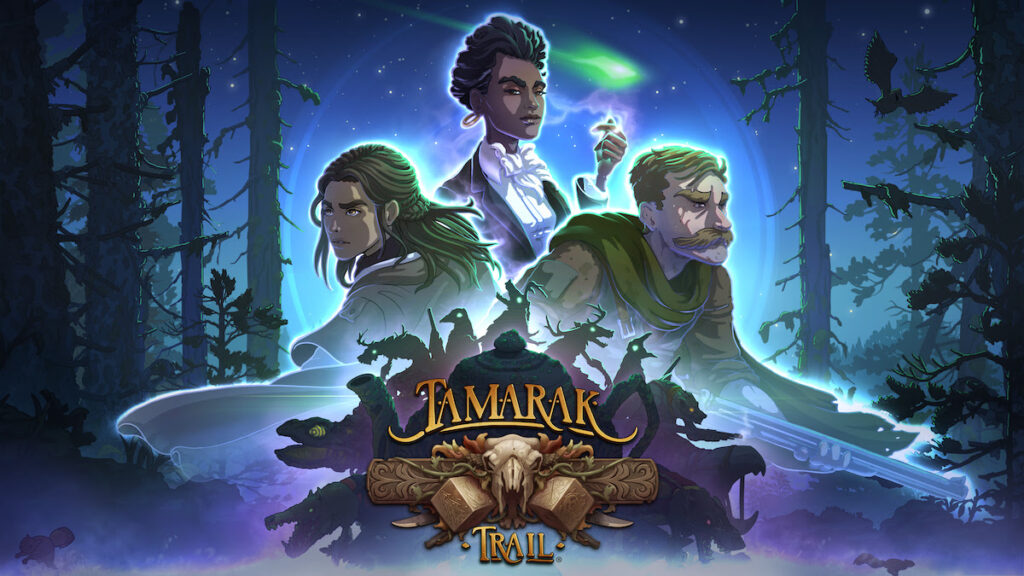
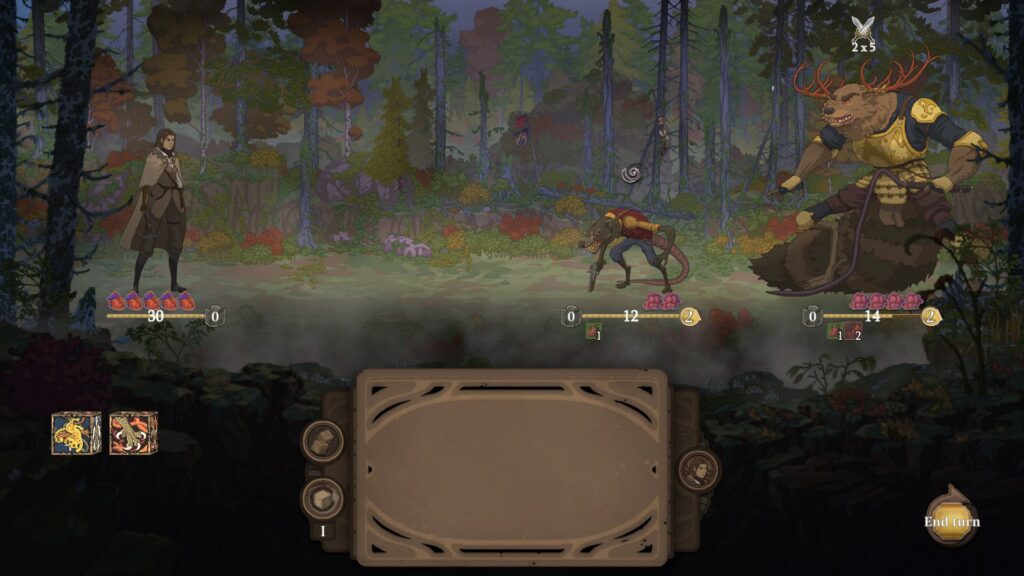
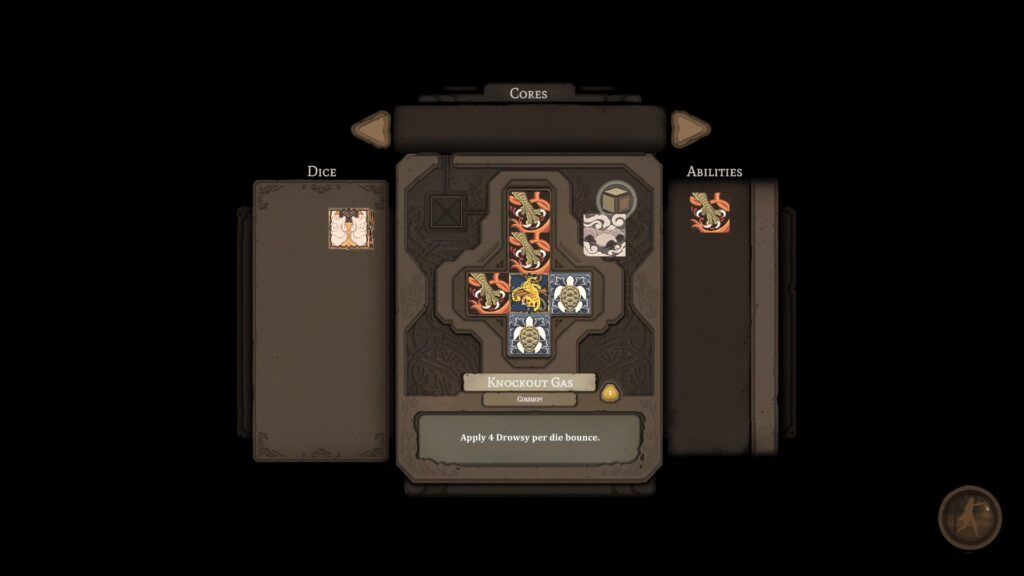
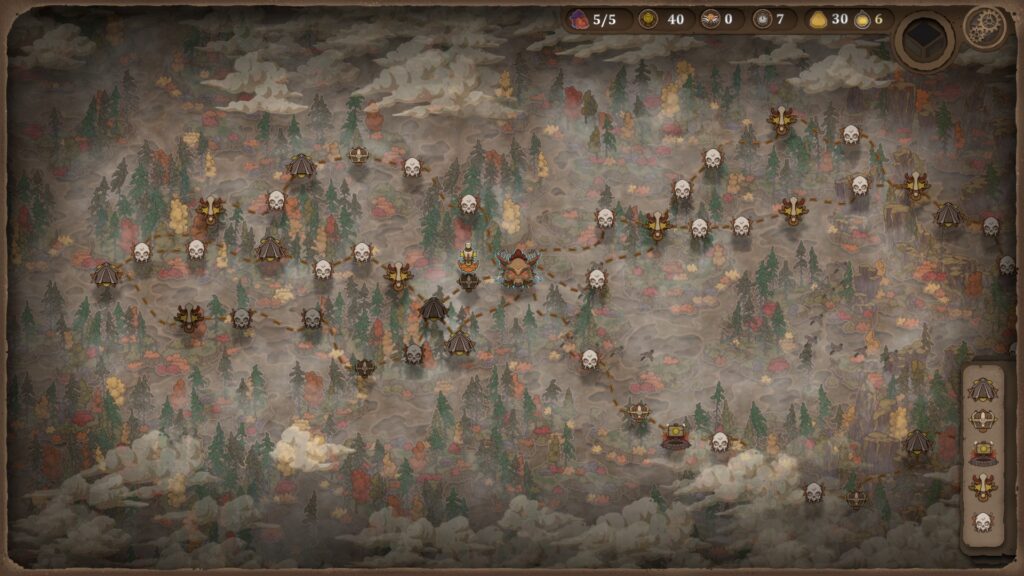
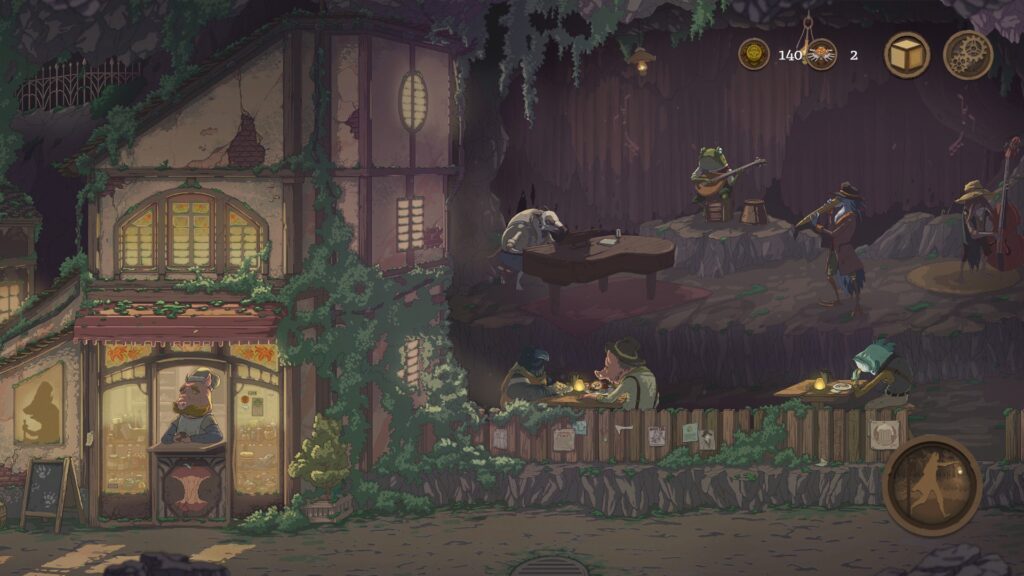




No Comments